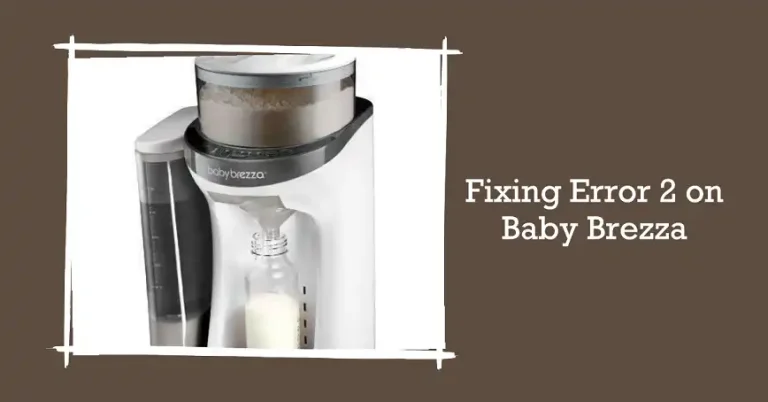Learn to play drums practical tips and step-by-step guide
How to Learn to Play Drums – Practical Tips and Step-by-Step Recommendations
Learning to play the drums is an exciting journey that combines rhythm coordination and creativity. Whether you aspire to join a band play for fun or master complex techniques the right approach will help you progress efficiently. Unlike many instruments drums require physical endurance and limb independence making consistent practice essential.
Before diving in it’s crucial to understand the fundamentals: proper grip posture and basic rudiments. Many beginners underestimate these aspects but they form the foundation for speed control and precision. A structured learning plan–starting with simple beats and gradually advancing to fills and grooves–ensures steady improvement.
Patience and persistence are key. Drumming isn’t just about hitting surfaces; it’s about timing dynamics and musicality. This guide provides actionable steps from selecting your first drum set to mastering advanced patterns so you can develop skills systematically and avoid common pitfalls.
Choosing the Right Drum Kit for Beginners
Selecting the right drum kit is crucial for beginners to build a strong foundation. Acoustic and electronic kits are the two main options each with distinct advantages.
Acoustic Drum Kits: These provide an authentic playing experience with natural sound and dynamic response. A basic 5-piece kit (bass drum snare two toms and a floor tom) is ideal for beginners. Look for durable materials like birch or maple shells.
Electronic Drum Kits: Perfect for practice in noise-sensitive environments. They offer built-in metronomes multiple sound options and headphone compatibility. Entry-level models from reputable brands provide good responsiveness.
Key Considerations: Budget space and noise restrictions determine the best choice. Acoustic kits require more room and produce higher volume while electronic kits are compact and adjustable.
For beginners exploring digital music production tools like FL Studio Free Download – Instant Access can complement practice by recording and editing drum patterns.
Start with a simple durable kit to focus on technique before upgrading to professional gear.
Acoustic vs. Electronic Drums: Which is Better for Starters?
Choosing between acoustic and electronic drums is a common dilemma for beginners. Both have advantages and drawbacks depending on your goals budget and living situation. Below is a detailed comparison to help you decide.
Acoustic Drums
- Pros:
- Authentic sound and feel ideal for developing proper technique.
- No need for additional equipment (amps cables) to play.
- Better dynamic control allowing nuanced playing.
- Cons:
- Loud and not suitable for noise-sensitive environments.
- Requires more space and regular tuning.
- Harder to record without professional microphones.
Electronic Drums
- Pros:
- Quiet practice with headphones ideal for apartments.
- Built-in metronome coaching features and sound customization.
- Easier recording via USB or MIDI.
- Cons:
- Less realistic feel compared to acoustic kits.
- Requires power and additional gear (amp/headphones).
- Higher initial cost for quality models.
Which is Best for Beginners?
Consider these factors:
- Noise Restrictions: If you live in an apartment electronic drums are more practical.
- Budget: Entry-level acoustic kits are cheaper but good electronic kits offer long-term value.
- Goals: Acoustic drums suit those aiming for live performances; electronic kits favor home practice and recording.
Ultimately the best choice depends on your personal circumstances. Test both if possible before deciding.
Key Features to Look for in a Beginner Drum Kit
Size and Configuration: A standard 5-piece drum kit (bass drum snare two toms and a floor tom) is ideal for beginners. Compact setups with smaller shell diameters (e.g. 20″ bass drum) are easier to handle and fit in tight spaces.
Material: Entry-level kits often use poplar or basswood for affordability but birch or maple shells offer better tone and durability. Avoid kits with cheap plastic components.
Hardware Quality: Sturdy stands pedals and mounts prevent wobbling and wear. Look for double-braced legs on cymbal stands and a responsive bass drum pedal.
Cymbals: Beginner kits usually include basic hi-hats a crash and a ride. Brass cymbals are budget-friendly but sound harsh; upgrading to bronze later improves tone.
Tuning and Stability: Smooth-tuning lugs on the drum hoops and durable tension rods help maintain sound consistency. Check for stable tom mounts that don’t detune easily.
Expandability: Ensure the kit allows adding extra drums or cymbals later. Verify compatibility with third-party hardware and accessories.
Price vs. Value: Avoid ultra-cheap kits with poor build quality. Mid-range beginner kits ($400-$800) balance cost and longevity often including essential hardware.
Budget-Friendly Options for Aspiring Drummers
1. Start with a Practice Pad: A practice pad is an affordable alternative to a full drum set. It helps develop stick control timing and rudiments without the high cost or noise of acoustic drums.
2. Buy Used Equipment: Check local classifieds music stores or online marketplaces for second-hand drum kits. Many used sets are in good condition and significantly cheaper than new ones.
3. Electronic Drum Kits: Entry-level electronic kits are often more affordable than acoustic sets. They are compact quiet and include built-in metronomes and play-along tracks.
4. Rent Before Buying: Some music stores offer rental programs for drum kits. This allows you to test different models before committing to a purchase.
5. DIY Drum Kits: Build a basic kit using buckets pots or cajóns for practice. While not ideal long-term this approach helps beginners learn rhythm and coordination.
6. Invest in Essentials First: Focus on acquiring core components like a snare drum bass drum pedal and hi-hat before expanding to a full set.
7. Free Online Resources: Use YouTube tutorials drumming apps and free sheet music instead of expensive lessons initially.
8. Look for Student Discounts: Some brands offer discounts for students or beginners. Always ask about promotions before purchasing.
Setting Up Your Drum Kit Correctly
A well-arranged drum kit ensures comfort efficiency and better playing technique. Follow these steps to set up your drums properly:
- Position the Bass Drum
- Place the bass drum centrally facing forward.
- Adjust the legs to stabilize it and prevent movement.
- Attach the pedal ensuring smooth action and tension.
- Set Up the Snare Drum
- Position the snare between your legs at waist height.
- Angle it slightly toward you for better stick rebound.
- Ensure the snare wires are tight enough for crisp response.
- Arrange the Toms
- Mount the rack toms above the bass drum at a slight angle.
- Place floor toms to your right (or left for left-handed players).
- Adjust heights for easy reach without straining.
- Position the Hi-Hat
- Place the hi-hat stand to the left of the snare (right for left-handed players).
- Set the height so the cymbals are slightly above the snare.
- Adjust pedal tension for quick foot control.
- Add Cymbals
- Mount the ride cymbal to the right slightly above the floor tom.
- Place crash cymbals within easy reach angled toward you.
- Use sturdy stands to prevent wobbling.
- Adjust the Throne
- Set the height so your thighs slope slightly downward.
- Ensure your feet comfortably reach pedals without stretching.
- Lock the throne in place to avoid movement while playing.
Test your setup by playing basic patterns. Make small adjustments until everything feels natural and effortless.
Positioning the Snare Toms and Cymbals for Comfort
Proper drum setup ensures efficiency speed and comfort while playing. Follow these guidelines to position your snare toms and cymbals correctly.
Snare Drum Positioning
Place the snare drum between your legs at waist height. The top rim should sit just below your navel. Angle it slightly toward you (10-15 degrees) for better stick rebound. Ensure it doesn’t obstruct leg movement when using the bass drum pedal.
Tom-Tom Placement
Mount toms should be close to the snare without blocking access. Follow these general rules:
| Tom Type | Height | Angle |
|---|---|---|
| High Tom | 1-2 inches above snare | 20-30 degrees |
| Mid Tom | Level with high tom | 15-25 degrees |
| Floor Tom | Same height as snare | 5-10 degrees |
Cymbal Setup
Position cymbals within easy reach:
- Hi-Hat: Place left of the snare (right-handed players) at shoulder width. Height should allow sticks to hit the edge comfortably.
- Ride Cymbal: Position to the right slightly lower than shoulder height. Angle it toward you for better control.
- Crash Cymbals: Mount above toms at a 30-45 degree angle. Ensure they don’t interfere with stick movement.
Adjust all components to minimize stretching and maintain a relaxed posture. Test each position by playing basic patterns before finalizing.
Adjusting the Height and Angle of Your Drum Throne
Proper throne adjustment is essential for comfort endurance and technique. A poorly adjusted seat can lead to back pain poor posture and inefficient playing. Follow these steps to optimize your setup.
Height Adjustment: Sit on the throne with your feet flat on the ground. Your thighs should slope slightly downward forming a 10-15 degree angle from your hips to your knees. If your knees are higher than your hips raise the throne. If your legs feel strained or your feet lift lower it.
Seat Angle: Most drum thrones have a flat or slightly tilted design. A flat seat provides stability while a slight forward tilt can improve pedal control. Avoid extreme angles–they cause unnecessary tension.
Leg Position: Keep your legs comfortably apart allowing free movement between the snare and bass drum pedals. Your knees should align just outside your elbows when holding sticks in playing position.
Testing Stability: Play a basic groove after adjusting. If you feel unbalanced or fatigued quickly recheck the height and angle. Minor tweaks can make a significant difference.
Material and Cushioning: Choose a throne with adequate padding to support long sessions. Hard surfaces increase discomfort over time while overly soft seats reduce stability.
Consistent throne adjustments ensure better performance and prevent injuries. Take time to refine your setup before each practice.
How to Tune Your Drums for the Best Sound
Tuning your drums is essential for achieving a clear balanced and professional sound. Follow these steps to tune your drums correctly.
Start by seating the drumhead properly. Place it on the drum shell and screw the tension rods finger-tight. Ensure even pressure by tightening opposite rods in a crisscross pattern.
Use a drum key to tighten each rod in small increments (quarter turns). Tap near each lug with a stick and listen for consistent pitch. Adjust until all lugs produce the same tone.
For the resonant head (bottom) repeat the same process. A higher tuning creates more sustain while a lower tuning shortens decay. Match top and bottom heads for a focused sound or detune slightly for warmth.
Experiment with different tunings. Higher tunings suit jazz and pop while lower tunings work for rock and metal. Use a tuner or reference tracks for precision.
Check tuning regularly. Temperature changes and playing affect tension. Retune as needed to maintain optimal sound quality.
FAQ:
How long does it take to learn the basics of drumming?
Learning the basics such as holding drumsticks correctly playing simple beats and keeping time usually takes a few weeks to a couple of months with regular practice. Progress depends on how often you practice—daily sessions of 20-30 minutes yield better results than sporadic longer sessions.
What’s the best way to improve hand and foot coordination?
Start with slow simple exercises like playing quarter notes with your hands while tapping your foot on the bass drum. Gradually increase speed and complexity. A metronome helps maintain steady timing. Exercises like “single strokes” (alternating hands) combined with bass drum hits build coordination over time.
Do I need an acoustic drum set to start learning?
No you can begin with an electronic drum kit or even practice pads. Electronic kits are quieter and useful for apartment living. Practice pads help develop stick control and are portable. Once comfortable transitioning to an acoustic set becomes easier.
How important is learning music theory for drummers?
While drummers don’t need deep theory knowledge understanding rhythm notation time signatures and basic musical terms helps. It makes reading sheet music playing with other musicians and learning new songs smoother. Focus on rhythmic patterns first.
What’s a common mistake beginners make when starting drums?
Many beginners hit too hard or grip sticks too tightly leading to fatigue and poor technique. Relax your grip and let the sticks rebound naturally. Another mistake is skipping warm-ups—spend 5-10 minutes on rudiments or slow exercises to build control.
How long does it take to learn basic drumming skills?
Learning basic drumming skills typically takes 3 to 6 months with regular practice. Beginners should focus on simple beats coordination exercises and timing. Practicing 30-60 minutes daily helps build muscle memory and rhythm. Progress depends on consistency prior musical experience and the quality of instruction. Starting with easy patterns and gradually increasing complexity prevents frustration.






